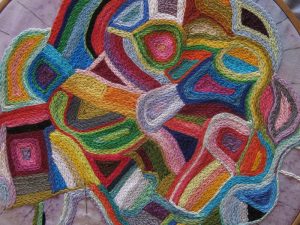
September 15, 2019; Chronicle of Higher Education
There is nothing more important, and possibly more boring, than providing a solid orientation for new board members or trustees. While the information shared—strategic directions, budgets, organizational structures and hierarchy, board responsibilities, committees and their work—is valuable and necessary for the critical decisions that boards and trustees will make, it is usually crammed into one session of a few hours—if that—without much time for real engagement. And, for most, there is a lack of context for the downpour of information being showered upon new leaders.
But taking a lesson from their own faculty and campus teaching techniques, Widener University in Chester, Pennsylvania has now modeled its trustee orientation on the concept of “flipped learning.” What this means for students and trustees is that both view videos and lectures outside of class time; class time (or for trustees, board orientation time) is then used to work on problems and work directly with peers and professors on solutions to important issues.
Specifically, 10 short videos were created for the trustees, covering subjects such as governance, budgets, athletics, board committees, and acquiring materials they might need. There were also video modules on each school and college. Once they had viewed the information, new trustees visited the campus and met with faculty, administrators, and students. This was a chance to interact with a range of campus actors. This was neither your typical college tour, nor a “sit in a room and get talked to” session—and was given real time and attention.
Sign up for our free newsletters
Subscribe to NPQ's newsletters to have our top stories delivered directly to your inbox.
By signing up, you agree to our privacy policy and terms of use, and to receive messages from NPQ and our partners.
And it is being given more attention by the Association of Governing Boards of Universities and Colleges (AGB), which has developed its own online, self-paced orientation courses, priced for members and nonmembers of AGB. These are three-hour courses that cover governance, fiduciary responsibilities, and board composition and culture, among other subjects. and are geared to public and private universities. Once completed, an institution can then “flip” its follow-up and customize in-person orientation to suit its needs.
As other colleges and universities follow this lead, the reviews from participants are positive, and the result seems to be more engaged and knowledgeable board members. Said one Widener trustee, “How the board functions, how it makes decisions, and what the committees do—that was all a black box to me coming in. The committees are where the real work gets done. [The modules] demystified that world for me and helped me learn what role I’ll play and how I’ll contribute better.”
Extrapolating from the campus level to the nonprofit organizational level might take some further “flipping,” but the idea has merit. The thought of redoing board orientations so that they truly engage new members is exciting. Offering board members a chance to learn in advance of a meeting, and then perhaps experience some hands-on time at your agency or with a partner agency, may build their understanding of nonprofit work. Talking with staff, other board members, and clients may clarify what your work is. And understanding committee work before being assigned to committees sounds like another way to elicit both loyalty and great ideas from new board members.—Carole Levine













